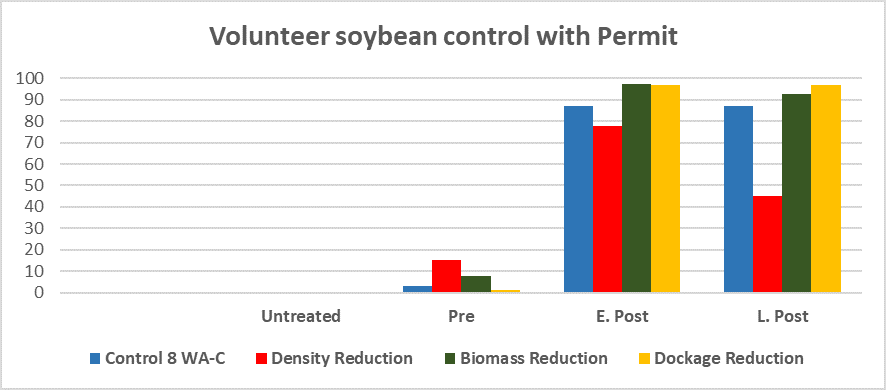Volunteer soybean in subsequent crops can pose a significant risk at the grower, processor and export level in dry common beans. Growers and processors face extra costs to separate soybean from dry common beans and still carry risk as tolerances for genetically modified soybean would be very low, especially in export markets.
Background
Soybean lost in the harvesting process can, under certain weather conditions and environments, survive to grow in crops the year after production. Volunteer soybean may also result from replant situations where a poor stand may be terminated and seeded to dry common beans. Soybean would have to be killed off prior to re-planting or at some point following re-planting to avoid crop competition and possible contamination at harvest. Volunteer soybean presents a risk due to reduced dry bean yield from soybean competition and costs to remove soybean from the dry bean crop. Processors face extra costs to ensure shipments are free of genetically modified material and face possible rejection of loads and subsequent costs.
Evaluations
In 2015 trials were initiated at the Huron Research Station to study volunteer soybean control at different application timings in white bean using Permit. Permit has good crop tolerance in white beans whether soil applied or postemergence. Soybean seed was broadcast, worked in and the entire trial area was rolled the day of white bean planting. Trials evaluated Permit at 19 g/ac across three application timings: preemergence, early postemergence (V2-V3 crop staging) and late postemergence (V3-V4 crop staging). Evaluations included control ratings 8 weeks after the late postemergence (WA-C), volunteer soybean density and biomass assessments, amount of soybean seed and pods (dockage) in white bean crop and white bean yield.
Results

Permit applied preemergence provided poor control of volunteer soybean with no reduction in density, biomass or dockage.
Permit applied early postemergence provided 87% control of volunteer soybeans, 78% reduction in plant density, 98% reduction in plant biomass, 97% reduction in dockage and increased dry bean yield.
Permit applied late postemergence provided 87% control of volunteer soybeans, 45% reduction in plant density, 93% reduction in plant biomass and 97% reduction in dockage. Although the late application did not provide the same level of volunteer soybean plant density reduction, biomass reduction was similar to the early postemergence application.
Generally, larger volunteer soybean plants did not die following Permit application but, the growing point was killed, growth was essentially stopped and soybean did not mature to produce pods.
Conclusions
Permit applied preemergence at 19 g/ac does not provide adequate control of volunteer soybean in white beans. Postemergence applications of Permit provide excellent control, reducing volunteer soybean plant density, plant biomass, dockage and protects yield of white beans.
Growers can use Permit effectively to control volunteer soybeans that occur from harvest losses from the previous year or as a result of a replant situation coming out of soybean going into dry common beans.
For further information please contact Peter Sikkema (psikkema@uoguelph.ca) or Todd Cowan (tcowan@uoguelph.ca)
This article was written by Todd Cowan and Peter Sikkema.